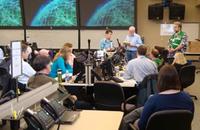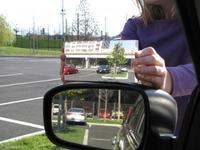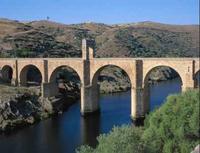-
New program to educate next generation of U.S. cybersecurity specialists

University of Maryland and Northrop Grumman create a cybersecurity honors program for undergraduates; the program, Advanced Cybersecurity Experience for Students (ACES), will immerse undergraduate students in all aspects of the field to meet growing manpower needs in the nation and the State of Maryland
-
-
Downstream consequences of depleting groundwater
Many jurisdictions across the united States manage and regulate surface water and groundwater without any recognition of the connections between the two; for instance, California has no legal framework for comprehensively managing the impacts of groundwater pumping; across most of California, well owners can pump as much as they like with little accountability for the impacts on rivers, other water users and ecosystems
-
-
Floating dock from Japan carries potential invasive species
When debris from the 2011 earthquake and tsunami in Japan began making its way toward the West Coast of the United States, there were fears of possible radiation and chemical contamination as well as costly cleanup; a floating dock that unexpectedly washed ashore in Newport, Oregon, earlier this month, and which has been traced back to the Japanese disaster, has brought with it a completely different threat — invasive species
-
-
New eyewitness identification procedure flawed: psychologist
University of California-Riverside psychologist finds that new eyewitness identification procedures may result in fewer correct IDs; the new procedures may, under some circumstances, lead to identification evidence that is less accurate than the identification evidence from the procedures they are designed to replace
-
-
Substantial growth in graduate enrollment in science, engineering in U.S. in the past decade
Graduate enrollment in science and engineering in the United States grew substantially in the past decade; approximately 632,700 graduate students were enrolled in science, engineering, and health programs in the United States as of fall 2010; this was a 30 percent increase from 493,000 students in 2000
-
-
New side mirror eliminates blind spot for drivers

A side mirror that eliminates the dangerous “blind spot” for drivers has now received a U.S. patent; the subtly curved mirror dramatically increases the field of view with minimal distortion
-
-
Ancient design concept leads to new ideas for building durable bridges

Engineers combine an ancient concrete arch form, dating back to the Roman empire, with a composite shell to create bridge beams which are designed to last 100 years
-
-
Nuclear, coal-fired electrical plants vulnerable to climate change
Thermoelectric plants, which use nuclear or fossil fuels to heat water into steam that turns a turbine, supply more than 90 percent of U.S. electricity and account for 40 percent of the U.S. freshwater usage; in Europe, these plants supply three-quarters of the electricity and account for about half of the freshwater use; warmer water and reduced river flows in the United States and Europe in recent years have led to reduced production, or temporary shutdown, of several thermoelectric power plants; a new study says this problem will only grow
-
-
Silkmoth inspires novel explosive detector
Scientists, imitating the antennas of the silkmoth, Bombyx mori, designed a system for detecting explosives with unparalleled performance; made up of a silicon microcantilever bearing nearly 500,000 aligned titanium dioxide nanotubes, the device is capable of detecting concentrations of trinitrotoluene (TNT) of around 800 ppq 1 (that is, 800 molecules of explosive per 1015 molecules of air), thus improving one thousand-fold the detection limit attainable until now
-
-
Can UAVs emulate bats’ flight capabilities?
The natural world has countless examples of creatures with extraordinary flight capabilities, but bats have evolved with truly extraordinary aerodynamic capabilities that enable them to fly in dense swarms, avoid obstacles, and fly with such agility that they can catch prey on the wing, maneuver through thick rainforests, and make high-speed 180 degree turns; researchers want to know whether UAVs can emulate bats
-
-
Geoengineering may lead to whiter sky
One idea for fighting global warming is to increase the amount of aerosols in the atmosphere, scattering incoming solar energy away from the Earth’s surface; scientists, however, theorize that this solar geoengineering could have a side effect of whitening the sky during the day
-
-
Livermorium and Flerovium added to the periodic table of elements
The International Union of Pure and Applied Chemistry (IUPAC) the other day officially approved new names for elements 114 and 116, the latest heavy elements to be added to the periodic table; the names of the two new elements: Flerovium for element 114, with the symbol Fl, and Livermorium for element 116, with the symbol Lv, late last year
-
-
Veterinary profession trends short-change biosecurity, food security, public health
More than half of veterinary students in the United States seek training in companion animal or pet medicine – with fewer and fewer graduate veterinary students pursuing Ph.D. training which would prepare them for academic careers, key jobs in the public sector, and some positions in industry; the result is a dwindling supply of veterinarians to fill jobs overseeing and enforcing food safety and animal health standards, conduct research in human drug development and advances in pet health, and participate in wildlife and ecosystem management, infectious disease control, biosecurity, and agro-terrorism prevention
-
-
Sandia Labs technology used to clean up Fukushima after disaster
A Sandia Lab-developed technology — crystalline silico-titanate, or CST — is a molecular sieve that can separate highly volatile elements from radioactive wastewater; the technology has been used to remove radioactive material from more than forty-three million gallons of contaminated wastewater at Japan’s damaged Fukushima Daiichi nuclear power plant
-
-
NSA launches cyber operations academic program
The NSA has launched National Centers of Academic Excellence (CAE) in Cyber Operations Program; the program is intended to be a deeply technical, inter-disciplinary, higher education program grounded in the computer science (CS), computer engineering (CE), or electrical engineering (EE) disciplines, with extensive opportunities for hands-on applications via labs and exercises
-
More headlines
The long view
New Technology is Keeping the Skies Safe
DHS S&T Baggage, Cargo, and People Screening (BCP) Program develops state-of-the-art screening solutions to help secure airspace, communities, and borders
Factories First: Winning the Drone War Before It Starts
Wars are won by factories before they are won on the battlefield,Martin C. Feldmann writes, noting that the United States lacks the manufacturing depth for the coming drone age. Rectifying this situation “will take far more than procurement tweaks,” Feldmann writes. “It demands a national-level, wartime-scale industrial mobilization.”
How Artificial General Intelligence Could Affect the Rise and Fall of Nations
Visions for potential AGI futures: A new report from RAND aims to stimulate thinking among policymakers about possible impacts of the development of artificial general intelligence (AGI) on geopolitics and the world order.
Smaller Nuclear Reactors Spark Renewed Interest in a Once-Shunned Energy Source
In the past two years, half the states have taken action to promote nuclear power, from creating nuclear task forces to integrating nuclear into long-term energy plans.
Keeping the Lights on with Nuclear Waste: Radiochemistry Transforms Nuclear Waste into Strategic Materials
How UNLV radiochemistry is pioneering the future of energy in the Southwest by salvaging strategic materials from nuclear dumps –and making it safe.
Model Predicts Long-Term Effects of Nuclear Waste on Underground Disposal Systems
The simulations matched results from an underground lab experiment in Switzerland, suggesting modeling could be used to validate the safety of nuclear disposal sites.
